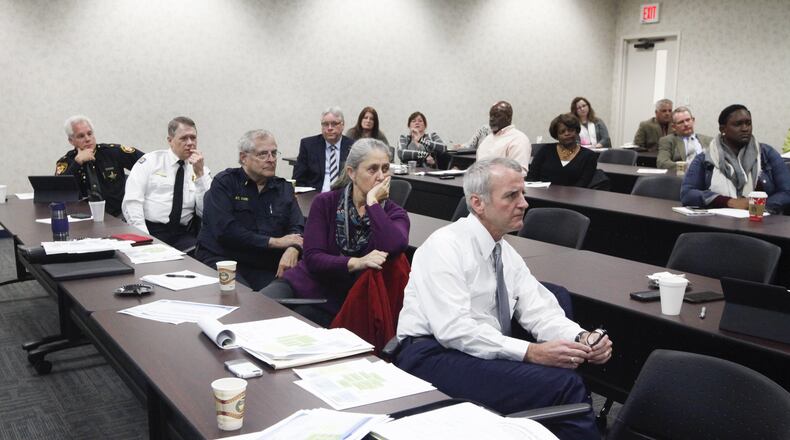RELATED: Overdose deaths drop to 3-year low in Montgomery County
“After a few rough years of being identified as the epicenter of the opioid crisis, I think we’re demonstrating again why Montgomery County is known for innovation,” said Helen Jones-Kelley, executive director of the Montgomery County Alcohol, Drug Addiction & Mental Health Services (ADAMHS) board.
The Community Overdose Action Team (COAT), formed in the fall of 2016 in response to the epidemic, will be honored in July with a human services achievement award at the association’s annual conference in Tennessee.
The effort is succeeding because of participation beyond elected officials, and beyond those in public health and law enforcement, said Montgomery County Sheriff Phil Plummer.
“The credit goes to the grassroots organizations that were in the trenches,” he said “Groups like Families of Addicts and the Drug Free Coalition are doing tremendous work out there.”
More than 200 people from 100-plus organizations worked to put the opioid epidemic in retreat, said Montgomery County Health Commissioner Jeff Cooper.
“The award is a reflection of our community’s willingness to come together and work united and align our resources to respond to a public health crisis,” he said.
Heroin and fentanyl are largely responsible for the overdose deaths of more than 1,600 people in Montgomery County over the past five years, including 566 in in 2017.
But last year could have been worse.
Beginning in June, the numbers took a dramatic turn for the better after 81 people died in May. By March this year, fewer people were dying each month than at any time since early 2015.
“We obviously didn’t set out to win awards when we started this. Our focus was to get organized and reduce the number of opiate deaths,” said Montgomery County Commissioner Dan Foley. “While there are still too many people dying of drug overdoses, the COAT is working and the community should feel good about it.”
Between January and May of last year, 1,773 overdose calls were reported in the county, Plummer said. The number is about a third that this year.
Barbara Marsh, Public Health – Dayton & Montgomery County assistant health commissioner, said COAT developed, expanded or enhanced more than 45-plus programs across the community.
MORE: We asked Ohioans how to tackle the opioid crisis. Boy did they respond
The collaborative continues to work on eight areas of focus from increasing treatment accessibility to decreasing the illegal supply of drugs, as well as distributing Narcan, educating the public and promoting the careful prescribing of opioids.
“I think there are many counties that are very interested in the structure, and they are looking at how to implement it,” Marsh said.
New programs were put in place at the Montgomery County Jail, including medication-assisted treatment, peer support counseling and a streamlined process for getting inmates into residential and outpatient programs once released, Plummer said. But on any given day, dozens of inmates are still waiting for treatment.
MORE: Drug crisis in Ohio: What solutions are making a difference?
“We have made great strides in dealing with the individuals who suffer from substance abuse and mental illness in our jail,” Plummer said. “We still have about 50 people per day going through withdrawal in our jail.”
Among other initiatives, COAT works with employers to give those struggling to get clean second and third chances at jobs, Jones-Kelley said.
“It was an all-out effort. It wasn’t a traditional response to a problem,” she said.
Cooper said the group effort won’t be disbanding anytime soon, the structure will stay in place to address other health crises.
“We know we still have a long way to go,” he said. “But it truly is a model – the Community Overdose Action Team – that we can now build upon to respond to when the drug of choice changes in the community.”
MORE: The man at the morgue: Drug deaths ‘emergency of mass disaster’ scale
About the Author

